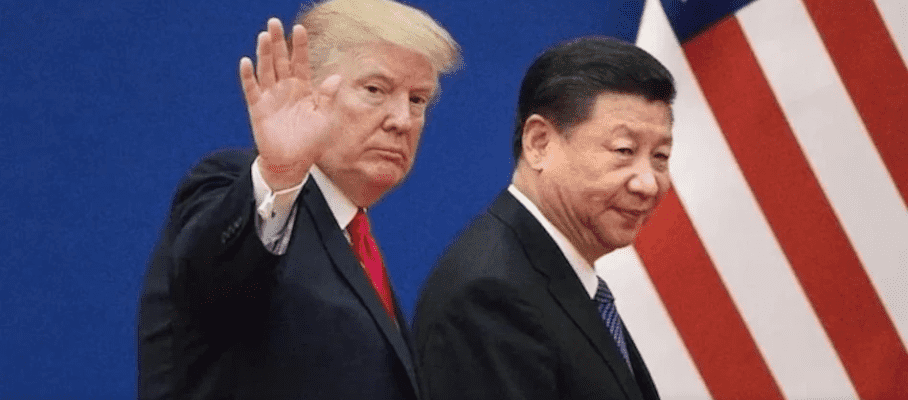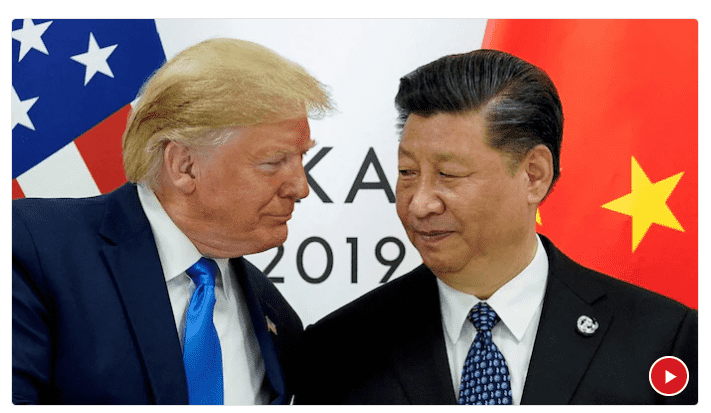Trump Declares Trade Deal with China “Done”: Rare Earths to Flow, Students to Return
Inside the New U.S.
In a surprising development amid ongoing geopolitical tension, former U.S. President Donald Trump announced that a new trade deal with China has been finalized. The deal, which revives hopes of renewed cooperation between the two economic superpowers, includes several groundbreaking components—chief among them, China’s commitment to supply rare earth elements to the U.S., and Washington’s agreement to welcome back Chinese students for academic programs.
A White House official further revealed that the U.S. has retained the right to impose a 55% tariff on certain Chinese imports—signaling that while the accord indicates progress, it is also a reflection of America’s intent to remain cautious and leverage strategic economic tools.
This article explores the details of the deal, its historical context, the rare earths dilemma, the student diplomacy aspect, and the broader implications for global geopolitics.
1. Background: U.S.–China Trade Tensions Since 2018
The trade relationship between the United States and China has experienced severe volatility since 2018, when President Trump launched a trade war with China, citing unfair trade practices, intellectual property theft, and the ballooning trade deficit.
Tariffs were placed on hundreds of billions of dollars’ worth of Chinese goods, and Beijing retaliated in kind. The tensions disrupted global supply chains, stoked inflationary fears, and forced multinational corporations to rethink their long-standing China strategies.
While Phase One of the trade agreement was signed in January 2020, the deal was largely symbolic and limited in scope. Then came the pandemic, further delaying progress. Now, with Trump eyeing a 2024 comeback, the declaration of a new trade deal has added both economic intrigue and political dimension.
2. Rare Earths: The Strategic Resource at the Heart of the Deal
What Are Rare Earths and Why Do They Matter?
Inside the New U.S. Rare earth elements (REEs) are 17 metallic elements crucial for manufacturing electronics, renewable energy technologies, electric vehicles, and military equipment. These include elements like neodymium, lanthanum, and yttrium—tiny in presence but massive in impact.
China currently controls about 60–80% of global rare earth production and over 85% of rare earth refining capacity. The U.S., despite having reserves, has been dependent on Chinese exports for years.
What the Deal Says About Rare Earths
According to official statements, China has agreed to guarantee uninterrupted supply of rare earth elements to the United States over the next five years. This includes provisions for:
-
Fixed export volumes for strategic U.S. industries.
-
Stable pricing mechanisms to avoid market manipulation.
-
Joint ventures in refining technologies within the U.S.
Trump hailed the rare earth Inside the New U.S. component as a “national security victory,” emphasizing how the U.S. has “secured our tech future by making sure China can’t choke us off.”
3. Chinese Students to Return: Rebuilding Academic Bridges
A Pivot in Policy
Inside the New U.S. Another key highlight of the trade agreement is the U.S. decision to lift restrictions on Chinese student visas, which had been tightened significantly during the Trump and early Biden administrations. These policies were implemented on grounds of espionage risk and academic theft in sensitive research fields like AI and quantum computing.
Now, under the new deal, the U.S. will:
-
Reopen student visa processing for STEM graduates.
-
Allow longer durations of stay and optional practical training.
-
Establish bilateral academic oversight committees to monitor research integrity.
This reversal is a nod to the educational soft power both nations wield. Trump described it as a move to “bring the best minds to America—legally and transparently.”
China’s Response
China’s Ministry of Education welcomed the development, calling it a “victory for people-to-people exchange.” The return of Chinese students—who contribute billions of dollars annually to the U.S. economy—could help repair a strained cultural and academic relationship.
4. The 55% Tariff Clause: Economic Protection or Diplomatic Flex?
Inside the New U.S. White House clarified that the new deal permits the U.S. to impose a 55% tariff on select categories of Chinese imports. This provision is not currently being exercised but remains available as a “snapback clause,” allowing the U.S. to act quickly if China fails to honor its commitments.
Critics argue that such a clause shows lack of trust, while supporters say it’s a strategic safeguard. The specific products subject to potential tariffs include:
-
Telecommunication equipment
-
Electric vehicle batteries
-
Semiconductor components
The message is clear: economic cooperation will not come at the cost of American competitiveness. 
5. Industry and Market Response
Wall Street Reacts
The Inside the New U.S. financial markets responded favorably to the deal:
-
The NASDAQ and Dow Jones closed higher on news of the agreement.
-
Tech and manufacturing stocks surged, particularly companies involved in EVs and renewable energy.
-
Chinese stocks listed in the U.S., including Alibaba and JD.com, also saw a significant uptick.
Tech Industry Weighs In
Inside the New U.S. Leaders from Silicon Valley have largely supported the deal, especially the rare earth provision, which ensures supply chain stability in a sector heavily reliant on Chinese minerals.
However, some CEOs warned that tariffs—even if unused—could inject uncertainty into long-term planning and investment strategies.
6. Political Significance for Trump
This deal arrives at a politically strategic moment for Donald Trump, who is seeking to consolidate his position as the Republican frontrunner for the 2024 election.
A Campaign Talking Point
Inside the New U.S. Trump has already framed the deal as evidence of his “unmatched deal-making skills,” promising voters that he alone can “rebuild American strength through smart economics.”
Observers believe the agreement serves three political goals for Trump:
-
Reclaim the trade war narrative as a story of ultimate victory.
-
Appeal to industries and workers hurt by past tariff battles.
-
Display diplomatic acumen, especially amid criticism of his foreign policy style.
7. How China Benefits from the Deal
While framed as a U.S. win, China also gains from this arrangement:
-
Reinstating Chinese students enhances diplomatic image-building.
-
Guaranteed rare earth sales offer stable export revenue.
-
Avoiding new tariffs helps economic recovery, especially as China deals with post-COVID growth challenges.
Chinese state media portrayed the deal as a sign that “China and the U.S. can engage pragmatically for mutual benefit.”
8. Global Implications: Beyond the Bilateral Scope
Supply Chains and Third-Party Countries
Inside the New U.S. Countries like Japan, South Korea, and Germany—heavily reliant on rare earth imports—are watching this deal closely. If the U.S. locks in favorable terms, it could create competitive disadvantages for others or encourage multilateral rare earth agreements.
Geopolitical Messaging
Inside the New U.S. deal sends a message to Russia, India, and the EU: that the U.S. and China can engage when interests align, even amid intense rivalry. It also reinforces the growing economic nationalism in global politics, where even partnerships come with built-in pressure valves like tariffs.
9. Criticism and Concerns
Not everyone is celebrating.
-
Environmentalists question whether the deal includes enough safeguards against unethical rare earth mining practices in China.
-
Academic watchdogs are concerned that reopening student flows could revive espionage concerns.
-
Free trade advocates argue that the tariff clause contradicts the spirit of open markets.
Moreover, with no independent enforcement mechanism revealed yet, there are concerns about transparency and accountability.
10. Conclusion: A Fragile Reset
The new U.S.–China trade deal—though far from a comprehensive solution—marks a tentative step toward economic normalization between two of the world’s most powerful nations. It combines strategic resource diplomacy, academic outreach, and protectionist fallback mechanisms in a delicate balancing act.
Whether it is a historic accord or merely a temporary truce remains to be seen. Much will depend on implementation, trust, and the political winds in both Washington and Beijing.
As Trump put it:
“This is not just a trade deal. It’s a signal to the world that America is back to making smart decisions.”
But the real test will be whether both nations can sustain cooperation without slipping back into a cycle of tariffs, tit-for-tats, and tech cold wars. ALSO READ:-Electoral Rolls Preparation in India: One of the World’s Most Rigorous and Transparent Exercises, Says CEC





